Glimpses of Colonial Jakarta in Petamburan Cemetery
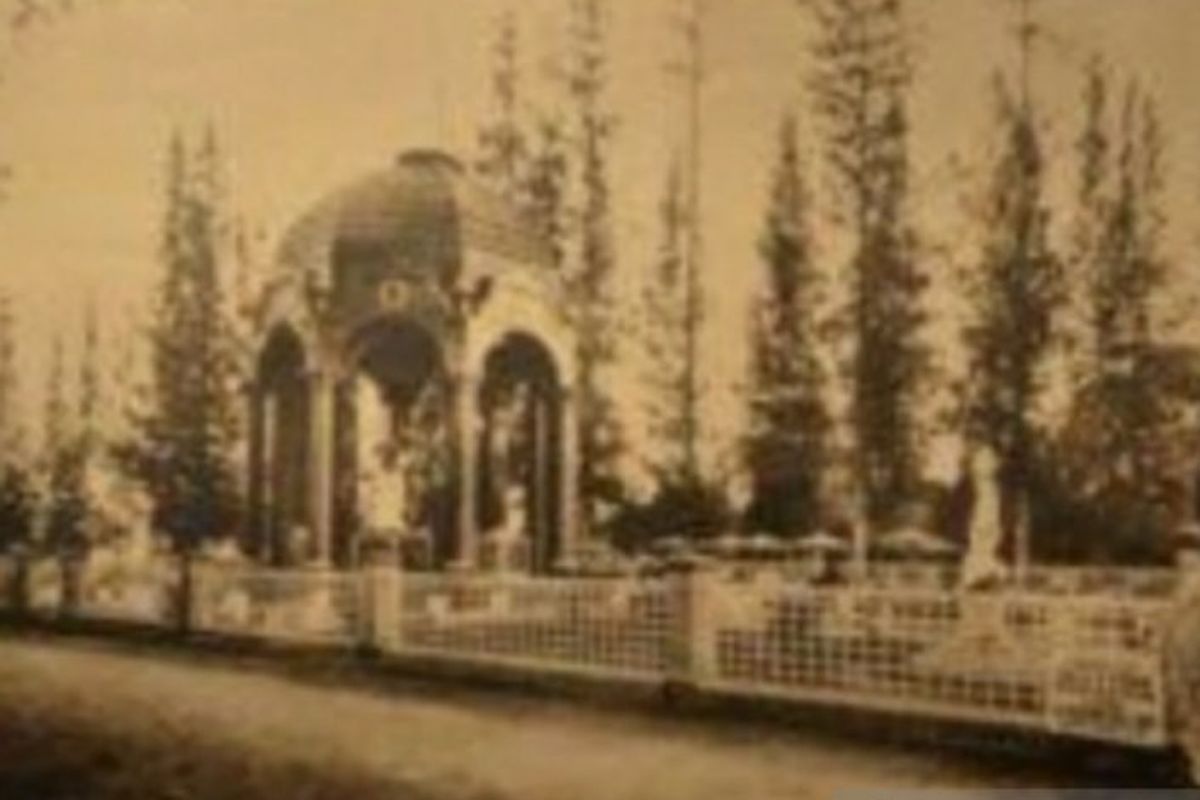
JAKARTA, KOMPAS.com – The grounds of Petamburan Cemetery remained tranquil, as befitting its standing as the oldest functioning public cemetery in Jakarta.
Founded in 1816, it is the final resting place for thousands of Jakartans since the Dutch colonial era, when it was known as Batavia. The place seemed immune from the upheavals sweeping through the Indonesian capital from war, the fight for Indonesian independence and political changes.
Petamburan is known except for three tombs: the O.G. Khouw mausoleum, the Japanese columbarium for funerary urns, and the Jewish tombs.
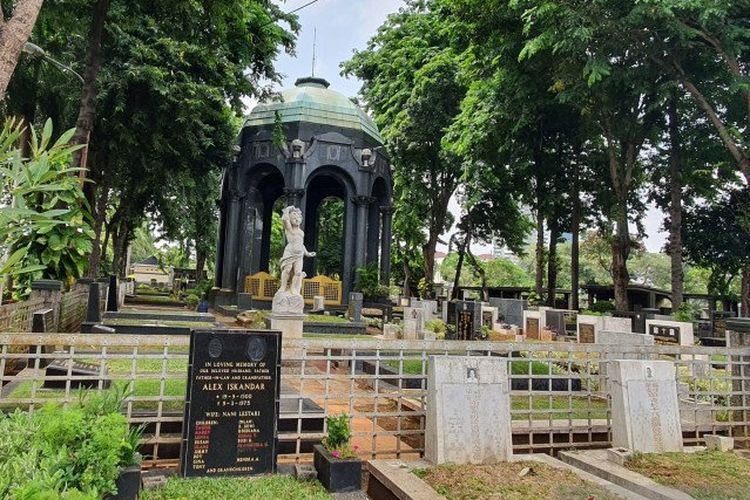 The OG Khouw Mausoleum at Petamburan Cemetery, Tanah Abang, Central Jakarta
The OG Khouw Mausoleum at Petamburan Cemetery, Tanah Abang, Central JakartaA labor of love
The O.G. Khouw mausoleum stood firm and proud over the rest of Jakarta’s Petamburan cemetery since it was commissioned by his wife Lim Sha Nio in 1927.
Made in the Art Deco style of other landmarks like the Kota train station or the Metropole cinema, the edifice evokes an era when Jakarta was a languid colonial city instead of a bustling metropolis.
Built by Jakarta colonial denizen Lim Sha Nio for her husband Oen Giok Khouw, a scion of a prominent Chinese mercantile and political family, the tomb stark, black marble facade lent a sense of lost love and mourning.
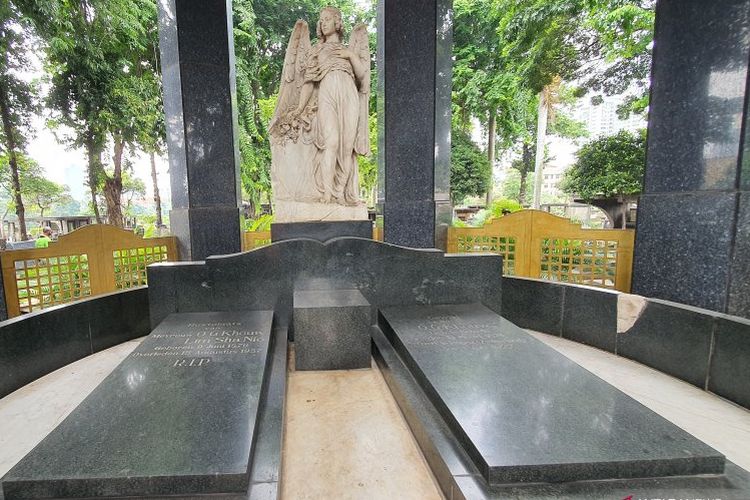 Lim Sha Nio and O.G. Khouws tombstones in the O.G. Khouw Mausoleum in Petamburan Cemetery, Tanah Abang, Central Jakarta
Lim Sha Nio and O.G. Khouws tombstones in the O.G. Khouw Mausoleum in Petamburan Cemetery, Tanah Abang, Central JakartaAlso read: This 'Gado Gado' Pushcart Is A Hidden Gem in Jakarta's Menteng District
“[The O.G. Khouw mausoleum] is often compared to the Taj Mahal in Agra, India. Lim made it to express her love for Khouw, just as Emperor Shah Jahan [made the Taj Mahal] as a labor of love for his wife Mumtaz Mahal,” said Petamburan cemetery historian Sandra Narwita.
“It is also the largest mausoleum in Southeast Asia. So it is remarkable that many people in Jakarta have never even heard of it.”
Lim spared no expense in building the tomb. “Lim Sha Nio spent $250 thousand dollars, which was a giant sum at the time, which is worth Rp. 3.5 billion today. She also hired Italian architect G. Racina to build the mausoleum,” Sandra noted.
The mausoleum is divided into two parts. The upper part featured the tombstones of O.G. Khouw and Lim Sha Nio, who was interred with her husband following her death in 1957. Statues of angels adorned the upper half, while bas-reliefs of the couple adorned the interior of the mausoleum.
The Jakarta Provincial Administration managed to keep the mausoleum in good condition, more than 90 years after its building.
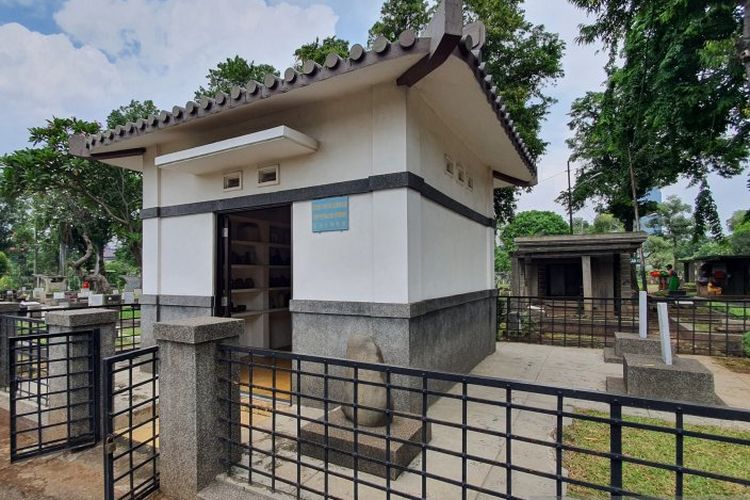 The Japanese Columbarium in Petamburan Cemetery, Tanah Abang, Central Jakarta
The Japanese Columbarium in Petamburan Cemetery, Tanah Abang, Central JakartaOther historical tombs
The whitewashed structure resembling the Japanese temple is unassuming compared to the more ornate O.G. Khouw Mausoleum, but far darker in its history. The building is none other than the Japanese Columbarium.
The edifice contained the ashes of 60 Japanese senior officers who died during the three-year Japanese occupation of Indonesia in World War II between 1942 to 1945.
"This Columbarium contains the ashes of [fallen] Japanese [servicemen]," the caption over the entrance said in Indonesian. Nearby, the same inscription is written in Japanese kanji letters on stones similar to those used in Japanese gardens.
Also read: Stop By Pecenongan For A Mouthwatering Adventure in Jakarta
“There are an estimated 79 urns [in the columbarium] as of October 2020. About 50 officials from the Japanese Embassy in Jakarta visit the columbarium on February and October every year to pray over the ashes,” said Sandra
“However, they did not visit [the columbarium] this year because of the Covid-19 pandemic.” While the officials might view the funerary building with reverence, beliefs that it is haunted reflect the trauma that the Japanese occupation still cast over Indonesia’s collective psyche.
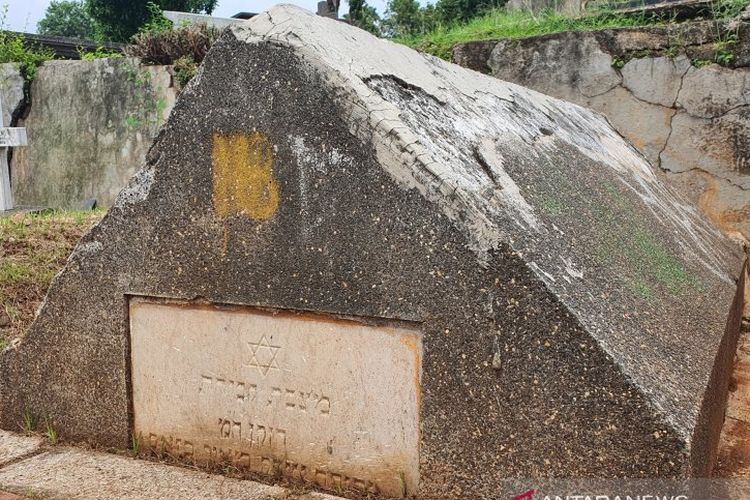 The Jewish Graves, Petamburan Cemetery, Tanah Abang, Central Jakarta
The Jewish Graves, Petamburan Cemetery, Tanah Abang, Central JakartaSandra also highlighted Petamburan’s Jewish graves. “There are six [Jewish] tombstones from the Dutch colonial era. We found they were inscribed with the six-pointed Star of David and inscriptions in Hebrew,” she noted.
“[Jakarta’s] Jewish community used to live near Arab merchants who do business in the Pasar Baru marketplace. We have reason to believe that the latter buried Batavia’s Jewish residents at Petamburan cemetery as they gradually died off.”
Unlike the O.G. Khouw Mausoleum or the Japanese Columbarium, time has not been kind to the Jewish graves. Three of the tombs remained intact, while the rest were ravaged by nature and graffiti by vandals.
Conserving the cemetery
Sandra recalled that the rundown state of the graves used to affect the rest of Petamburan cemetery. “The cemetery did not get a proper renovation until 2017, when I worked with the maintenance crew to clean it up. We managed to clean the place up in three months” she recalled.
“Before it was a den of vice for illegal gambling, drugs and sex, as well as a haunt for vagrants and beggars. The overgrown weeds used to be reach to a person’s thighs and obliterate the Jewish tombstones, along with rubble.”
Her efforts paid off, as people come to sightsee or find the grave of their loved ones. 71 personnel are on standby around the clock to keep criminals out and keep the peace in the cemetery. Sandra is also currently lobbying the government to make Petamburan cemetery a heritage site.
Whether Sandra’s efforts will pay off or not remains to be seen. What is for certain is that her initiative has managed to get Petamburan Cemetery back on Jakarta’s tourist circuit.
Source:
Simak breaking news dan berita pilihan kami langsung di ponselmu. Pilih saluran andalanmu akses berita Kompas.com WhatsApp Channel : https://www.whatsapp.com/channel/0029VaFPbedBPzjZrk13HO3D. Pastikan kamu sudah install aplikasi WhatsApp ya.






























